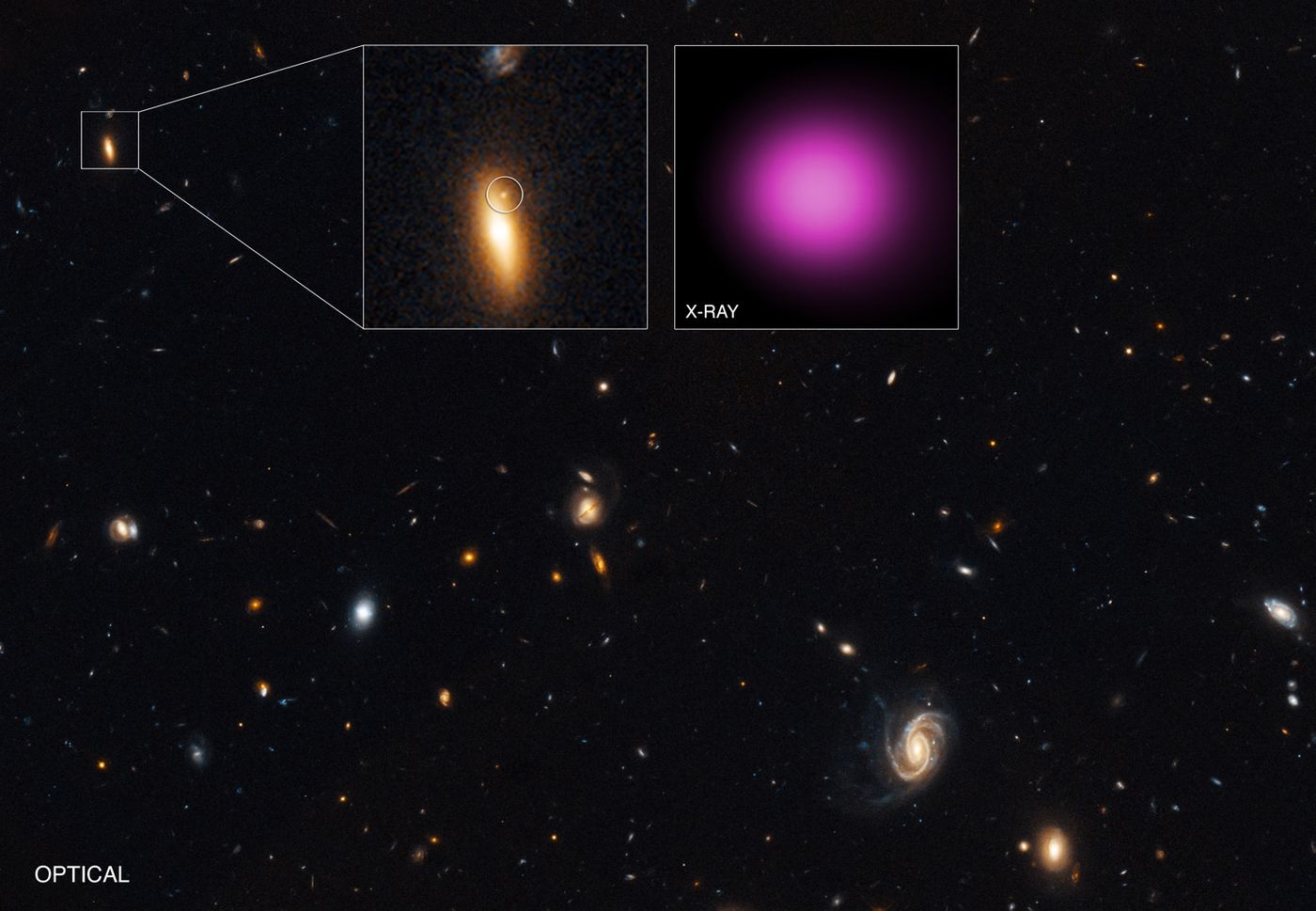Astronomers Spot Ultra Luminous Wandering Black Hole in Another Galaxy
Typically, we find supermassive black holes at the centers of galaxies, just like we find other entities of space in certain areas that we understand to be the norm.
On the other hand, sometimes one of those black holes that we expect to be at the center of a galaxy isn’t quite at the center, and may even be moving. These are known as wandering black holes.

Image Credit: NASA/CXC/UNHD.LIN ET AL/STSCI
Astronomers have had their eyes on what may be a wandering black hole for the past 16 years. Dubbed XJ1417+52, this black hole with 100,000 times the mass of our Sun has been spotted giving off vast amounts of extra-luminous X-rays with both NASA’s Chandra X-ray observatory and the ESA’s XMM-Newton X-ray observatory.
In the early 2000’s it gave off some of the most luminous X-rays ever, which scientists believe may have been the result of the black hole devouring a star that ended up in its path. The gasses from the star would have been super-heated by the immense gravity of the black hole, and this would have generated these visible X-ray bursts.
Research regarding this phenomenon has been recently published in The Astrophysical Journal. Since then, it’s been relatively stable.
The X-rays that continue to be given off by XJ1417+52 are so luminous that NASA says they’re classifying it as a hyper-luminous X-ray source (HLX), which is up to 10,000-100,000 times more luminous than stellar black holes.
Astronomers say XJ1417+52 is up to 10 times more luminous and 10 times more distant than any known wandering black hole to date, making it the new record-holder for both.
Facts aside, where did this black hole come from, and why isn’t it at the center of the galaxy where we’d typically expect to see it?
It turns out that this may have been a result of a galaxy collision. The larger galaxy (GJ1417+52) in this collision probably snatched the black hole right out from under the smaller one, and it now resides in the larger galaxy where it continues to move along with the momentum it had.
For now, that’s all we have to go by, but this is certainly one of the more interesting black hole discoveries of the century. These wandering black holes aren’t very common, so studying them can help us learn more about them outside of their natural habitat.
Source: NASA via Space.com








